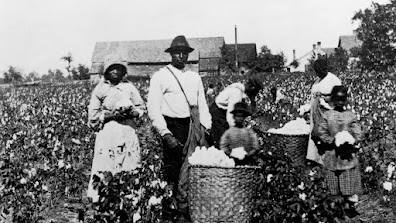The Literature of Slavery and Freedom
"The engendering impulse of African American literature is resistance to human tyranny. The sustaining spirit of African American literature is dedication to human dignity. As resistance to tyranny and dedication to human dignity became increasingly synonymous with the idea of America itself in the latter half of the eighteenth century, early African American writers identified themselves as Americans with a special mission. They would articulate the spiritual and political ideals of America to inspire and justify the struggle of blacks for their birthright as American citizens. They would also demand fidelity to those same ideals from whites whose moral complacency and racial prejudices hand blinded them to the obligations of their own heritage" (Gates et al. 151).
In his introduction to "The Literature of Slavery and Freedom" (Norton), Dr. Henry Louis Gates, Jr. points out many of the key issues facing the earliest African American writers of the eighteenth century, who were courageous enough to commit their stories to the page. During this time, the young nation was gradually becoming unified under the philosophies of Enlightenment and Christian Humanism, while gathering momentum toward a War of Independence from British rule. Meanwhile, those who had been subjected to chattel slavery were summarily left out of this bid for independence and were denied recognition of their humanity.

This was the task facing the earliest writers of what has now come to be known as the Slave Narrative: the assertion of one's humanity. From the inception of slavery in the colonies, slaves (and former slaves) were not only discounted from regular citizenship, but mass movements toward Christianizing slaves surged and ebbed because of a lack of consensus as to whether slaves possessed eternal souls. The twin philosophies of self-determination and independence--and the claim to a soul--were the driving forces behind the early slave narratives of Olaudah Equiano, Venture Smith, Jupiter Hammon, David Walker, and later, Frederick Douglass. Each of these writers, to one extent or the other, engages Enlightenment philosophies of self-determination and humanity. Included is an example of his or her Christian faith as evidence of his or her intrinsic value.
 |
| thedailybeast.com |
In 1861, one of the first slave narratives by a woman was published. It was called Incidents in the Life of a Slave Girl. The novel began as a serial publication inspired by abolitionists, Amy and Isaac Post, and was later published as a single volume in which the perversions and special cruelties toward women in slavery were revealed. Jacobs' narrative bore the same conventions as many of her predecessors' narratives did, and with this addition, Incidents became another installment of a growing genre.
Still, the slave narrativist had as his first task the evidence that he was capable of intellectual thought and literary production. The need for authentication was revealed in the titles of each narrative: "Written by Himself," as well as the presence of an Authentication Letter. This document was usually penned by a wealthy white progressive whose reputation carried sufficient weight to endorse the author's veracity. Other narrativists, like Sojourner Truth who could not write or read, relied on an amanuensis, or 'ghost writer,' to write their stories.
The Abolitionist's cause grew in popularity toward the middle of the nineteenth century, and the slave narrative became its centerpiece for the eradication of slavery. A set of marked qualities emerged among slave narratives, and scholars have compiled these features as the conventions of the slave narrative. A few of the most common are listed below:
1. Slave narratives are episodic. There is usually a brief summary of events at the start of each chapter.
2. The phrase, "I was born..." marks the fact of the subject's birth, the place of his birth, but no certainty as to the date of his birth.
3. The author recalls his parents or a grandparent who raised him. There are usually fond memories of a mother or grandmother, but only vague memories of a father. It is often the plantation owner who is the slave's father.
4. The author describes the first abuse he receives and others that follows. Much attention is paid to women who suffer brutality.
5. The author recalls a new slave arriving to the plantation from Africa who is remarkably strong a strong-willed, and refuses to be whipped.
6. The author recalls the legalities and prohibitions against teaching a slave to read and write, observing this law as a means to keep slaves ignorant and unaware.
7. The author recalls a self-professed "Christian" slaveholder whose cruelty was worse than that of any others.
8. The author describes the living conditions of the slave: the quarters, the food, the clothing, the medical attention (if any) that slaves received.
9. The author includes a description of the slave auction, with details of families, married couples, parents and children being painfully separated.
10. The author describes the fate of the runaway slave.
11. The author describes the benevolence of abolitionists/northerners.
12. The author describes his conversion to the Christian faith via his literacy.
13. The author assumes a new name, changing his address from "Smith's John" to "John Smith," or naming himself after a famous abolitionist or benevolent politician.
*Adopted from Source.
Below are the images of several famous abolitionists. The list is not comprehensive by any means:
Harriet Tubman
William Lloyd Garrison
Amy Post
Frederick Douglass
William Wells Brown
John Brown
Lucretia Mott
Lydia Marie Child
Elizabeth Cady Stanton
Frances E.W. Harper














Comments
Post a Comment